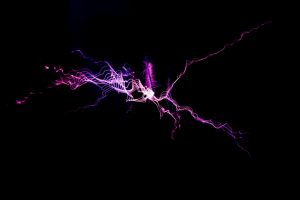Evidence Of The Piezoelectric Effect In Liquids:

Scientists have reported evidence of the piezoelectric effect in liquids, for the first time.
- Piezoelectric effect is a phenomenon where specific types of material produce an electric charge proportional to the mechanical stress applied to them.
- It was first time discovered in 1880, in quartz.
- Quartz is the most famous piezoelectric crystal. Quartz is silicon dioxide (SiO2).
- The quartz crystal consists of silicon and oxygen atoms at the four vertices of a three-sided pyramid; each oxygen atom is shared by two pyramids. These pyramids repeat themselves to form the crystal.
- When mechanical stress is applied the position of the charge is pushed further from the centre, giving rise to a small voltage. This is the source of the effect.
- It is used in this capacity in analog wristwatches and clocks.
- Such crystals are also used in cigarette lighters, electric guitars, TV remote controls, audio transducers, and other instruments where converting mechanical stress to a current is useful.
- This effect has only been expected in solids thus far because the body being squeezed needs to have an organised structure, like pyramids of quartz.




